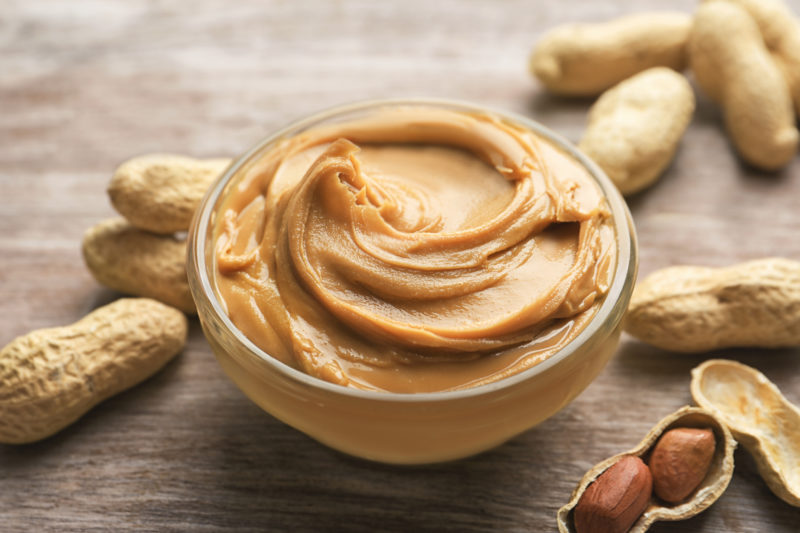Is there a way to prevent my baby from developing a food allergy? How likely is it that my child will develop a food allergy? Questions regarding children and food allergies stem from common concerns that many new and expecting parents consider as food allergies among infants and children in the United States have increased.
According to the Centre for Disease Control and Prevention, an estimated 4 to 6% of children under the age of 18 have a food allergy, and 30% of those children are allergic to two or more food items (Gupta et al., 2011). Currently, there are more than 170 food items that have been reported to cause allergic reactions, but the most prevalent food allergens in the United States include cow’s milk, eggs, peanuts, tree nuts, wheat, soy, fish, and shellfish (Boyce et al., 2010). Food allergy reactions can range from mild (e.g., a few hives, a small rash, eczema) to life-threatening (e.g., anaphylaxis, swelling of eyes, severe vomiting, severe diarrhea).
Research indicates that some children may have an increased risk of developing a food allergy, such as infants who display moderate to severe eczema (Martin et al., 2015) or who have a history of a food allergy or a family member with a history of a food allergy (Koplin et al., 2013).
When it comes to preventing food allergies in infants, current research suggests there are no significant allergy prevention benefits to limiting a mother’s food intake of common allergenic foods during pregnancy or when breastfeeding (Greer, Sicherer, & Burks, 2008). In addition, for years allergy specialists recommended infants avoid eating peanuts in order to decrease their chances of developing an allergy. However, the first major study conducted by the LEAP (Learning Early About Peanut Allergy) demonstrated that babies who had a common egg allergy and eczema who consumed peanuts within their first year were less likely (81%) to develop a peanut allergy (Du Toit et al., 2015). In 2000, the American Academy of Pediatrics (AAP) suggested that certain allergenic foods should be delayed between 1 to 3 years of age in order to help decrease or prevent atopic dermatitis. Today, however, new guidelines suggest that when a baby is ready for solid foods (usually around 6 months) parents and caregivers can slowly introduce these foods into babies’ diets. With that being said, most of the recommendations around introducing allergenic foods into babies’ diets at an early age (i.e., 6 months) are based on studies that were conducted solely on peanut allergies.
When introducing babies to common allergenic foods, parents should take into consideration the advice of their baby’s pediatrician and their own preferences. As a parent, you should introduce new foods one at a time, monitor your babies’ diet, and watch for any developing allergy symptoms caused by the consumed food. If you notice severe symptoms occurring seek medical professional help immediately as reactions can be serious and/or life-threatening. Please examine the following resources for additional tips and information on common food allergies.
Additional Resources
- https://www.childrens.com/health-wellness/tips-for-introducing-common-food-allergens-to-your-baby
- https://www.parents.com/recipes/scoop-on-food/the-feeding-advice-that-can-help-prevent-food-allergies/
- https://www.healthychildren.org/English/ages-stages/baby/feeding-nutrition/Pages/Switching-To-Solid-Foods.aspx
References
American Academy of Pediatrics, Committee on Nutrition. (2000). Hypoallergenic infant formulas. Pediatrics, 106, 346-349.
Boyce, J. A., Assa’ad, A., Burks, A. W., Jones, S. M, Sampson, H. A., Wood, R. A., … Schwaninger, J. M. (2010). Guidelines for the diagnosis and management of food allergy in the United States. Journal of Allergy and Clinical Immunology, 126(60), 1-58.
Centre for Disease Control and Prevention (February 14, 2018). Retrieved from https://www.cdc.gov/healthyschools/foodallergies/
Du Toit, G., Roberts, G., Sayre, P. H., Bahnson, H. T., Radulovic, S., Santos, A. F., … Lack, G. (2015). Randomized trial of peanut consumption in infants at risk for peanut allergy. The New England Journal of Medicine, 372(9), 803-813. doi:10.1056/NEJMoa1414850
Greer, F. R., Sicherer, S. H., Burks, A. W., American Academy of Pediatrics Committee on Nutrition, American Academy of Pediatrics Section on Allergy and Immunology, & Committee on Nutrition and Section on Allergy and Immunology. (2008). Effects of early nutritional interventions on the development of atopic disease in infants and children: The role of maternal dietary restriction, breastfeeding, timing of introduction of complementary foods, and hydrolyzed formulas. Pediatrics, 121(1), 183-191. doi:10.1542/peds.2007-3022
Gupta, R. S., Springston, E. E., Warrier, M. R., Smith, B., Kumar, R., Pongracic, J., & Holl, J. L. (2011). The prevalence, severity, and distribution of childhood food allergy in the United States. Pediatrics, 128, e9. doi: 10.1542/peds.2011-0204
Koplin, J.J., Allen, K.J., Gurrin, L.C., Peters, R.L., Lowe, A.J., Tang, M.L., Dharmage, S.C., & the HealthNuts Study Team. (2013). International Journal of Environmental Research and Public Health, 10(11), 5364-5377.
Martin, P.E., Eckert, J.K., Koplin, J.J., Lowe, A.J., Gurrin, L.C., Dharmage, S.C., … HealthNuts Study Investigators. (2015). Which infants with eczema are at risk of food allergy? Results from a population-based cohort. Clinical & Experimental Allergy, 1(45), 255-264.
Palmer, D. J., Metcalfe, J., Makrides, M., Gold, M. S., Quinn, P., West, C. E., & Prescott, S. L. (2013). Early regular egg exposure in infants with eczema: A randomized controlled trial. Journal of Allergy and Clinical Immunology, 32(2), 387-392. doi:10.1016/j.jaci.2013.05.002
Togias, A., Cooper, S. F., Acebai, M. L., Assa’ad, A., Baker, J. R., Beck, L. A., … Boyce, J. A. (2017). Addendum guidelines for the prevention of peanut allergy in the United States: Report of the National Institute of Allergy and Infectious Diseases–sponsored expert panel. World Allergy Organization Journal, 10(1), 1-18. doi: 10.1186/s40413-016-0137-9

